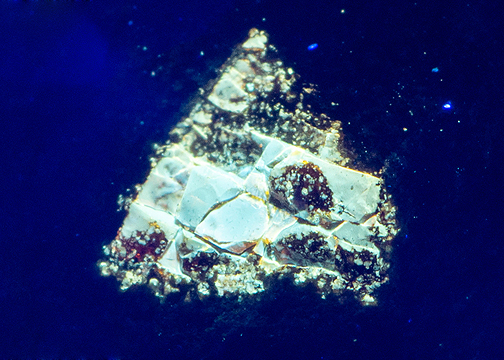Abstract
Cretaceous amber plays a crucial role in comprehending the origin and early evolution of terrestrial life, as well as understanding paleoclimate and paleoecology during the Late Mesozoic, especially the Cretaceous Terrestrial Revolution. Amber outcrops from the Cretaceous period are to date more abundant in the Northern Hemisphere than in the Southern one and are primarily distributed within an interval of approximately 54 million years, spanning from the Barremian to the Campanian (Delclòs et al., 2023). These outcrops are known for containing amber exceptionally rich in bioinclusions, as seen in locations such as Kachin in Myanmar (Grimaldi et al., 2002) and Lebanon (Maksoud et al., 2022).
References
Azar, D., Gèze, R. & Acra, F. (2010) Chapter 14: Lebanese amber. In: Penney, D. (Ed.), Biodiversity of fossils in amber from the major World deposits. Siri Scientific Press, Manchester, pp. 271–298.
Azar, D., Maksoud, S., Cai, C.Y. & Huang, D.Y. (2019) A new amber outcrop from the Lower Cretaceous of northeastern China. Palaeoentomology, 2 (4), 345–349. https://doi.org/10.11646/palaeoentomology.2.4.8
Delclòs, X., Peñalver, E., Barrón, E., Peris, D., Grimaldi, D.A., Holz, M., Labandeira, C.C., Saupe, E.E., Scotese, C.R., Solórzano-Kraemer, M.M., Álvarez-Parra, S., Arillo, A., Azar, D., Cadena, E.A., Corso, J.D., Kvaček, J., Monleón-Getino, A., Nel, A., Peyrot, D., Bueno-Cebollada, C.A., Gallardo, A., González-Fernández, B., Goula, M., Jaramillo, C., Kania-Kłosok, L., Valle, R.L., Lozano, R.P., Meléndez, N., Menor-Salván, C., Peña-Kairath, C., Perrichot, V., Rodrigo, A., Sánchez-García, A., Santer, M., Sarto i Monteys, V., Uhl, D., Viejo, J.L. & Pérez-de la Fuente, R. (2023) Amber and the Cretaceous resinous interval. Earth-Science Reviews, 243, 104486. https://doi.org/10.1016/j.earscirev.2023.104486
Grimaldi, D., Engel, M.S. & Nascimbene, P. (2002) Fossiliferous Cretaceous amber from Burma (Myanmar): its rediscovery, biotic diversity, and paleontological significance. American Museum Novitates, 3361, 1–71. https://doi.org/10.1206/0003-0082(2002)361<0001:FCAFMB>2.0.CO;2
Maksoud, S., Granier, B.R. & Azar, D. (2022) Palaeoentomological (fossil insects) outcrops in Lebanon. Carnets de Géologie, 22 (16), 699–743. https://doi.org/10.2110/carnets.2022.2216
Li, Y.L., Zheng, D.R., Sha, J.G., Zhang, H.C., Denyszyn, S. & Chang, S.C. (2023) Lower Cretaceous Hailar amber: The oldest-known amber from China. Cretaceous Research, 145, 105472. https://doi.org/10.1016/j.cretres.2022.105472
Shi, G.L., Dutta, S., Paul, S., Wang, B. & Jacques, F.M.B. (2014) Terpenoid compositions and botanical origins of Late Cretaceous and Miocene amber from China. PLoS One, 9 (10), e111303. https://doi.org/10.1371/journal.pone.0111303
Zhang, X.Q., Zhou, X.P. & Chen, X.Y. (1993) Atlas of Cretaceous to Tertiary strata classification and correlation in the Sanshui Basin of South China. Marine Press, Beijing, pp. 1–136.
Zhong, H.B. (2003) Amber resources of China. Journal of Gems and Gemmology, 5 (2), 33.


